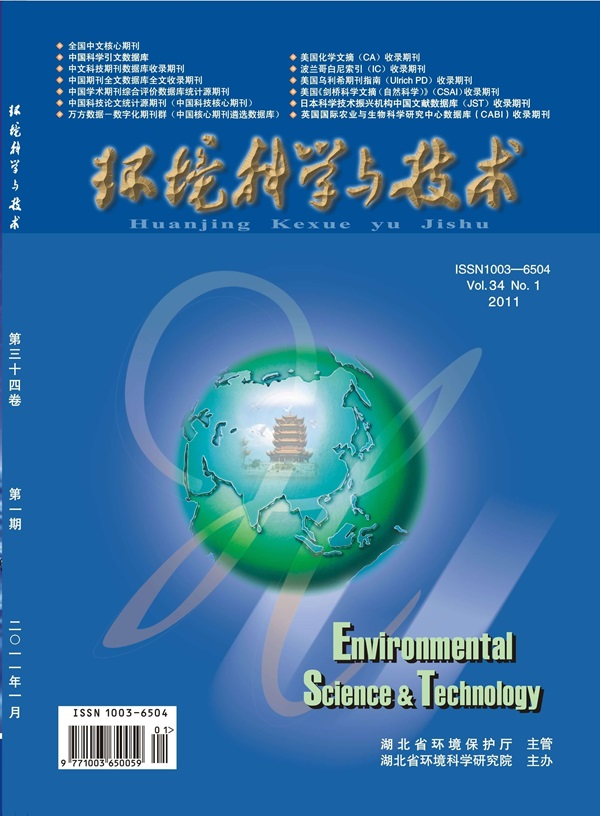揭示进料间隔丝微观结构在膜污染中的隐藏作用。
IF 10.8
1区 环境科学与生态学
Q1 ENGINEERING, ENVIRONMENTAL
引用次数: 0
摘要
膜污染是影响水处理中螺旋缠绕膜(SWM)模块性能的一个长期存在的问题。进料间隔器创建进料通道并控制流体动力学特性,在SWM模块中是必不可少的,但人们对其细丝微结构在膜污染中的作用知之甚少。在这里,我们深入研究了细丝的凹和扭转特征如何影响局部流体动力学行为,从而影响膜污染。研究结果表明,膜污染速率与低速区分数(r)和平均传质系数(kave)均有显著相关。当扭转角(θ)从0°增加到180°时,r降低30%,扭矩提高6.1%,结垢率降低13.2%,而当扭转角(θ)进一步增加到540°时,效果不显著。具有扭转特性的防污性能的增强来自于减小的水力滞阻区和增大的再循环区域以及更强的湍流。然而,凹形特征容易形成溶质积聚的停滞区,造成严重的膜污染,并且随着凹形深度的增加,即使结合扭转特征,这种有害影响也会加剧。我们提出了一种宏观到微观的途径来优化进料间隔剂,以对抗膜污染,并提高SWM模块在环境应用中的性能。本文章由计算机程序翻译,如有差异,请以英文原文为准。
Unveiling the Hidden Role of Feed Spacer Filament Microstructure in Membrane Fouling.
Membrane fouling is a persistent problem that impairs the performance of spiral wound membrane (SWM) modules used for water treatment. While the feed spacer, which creates feed channels and governs hydrodynamic properties, is essential in SWM modules, the role of its filament microstructures in membrane fouling remains poorly understood. Here, we delved deeply into how the filament's concave and torsion features influence local hydrodynamic behavior and thus membrane fouling. The findings reveal that the membrane fouling rate could be significantly correlated with both the low-velocity region fraction (r) and the average mass transfer coefficient (kave). Increasing torsional angle (θ) from 0 to 180° reduces r by 30%, enhances kave by 6.1%, and diminishes fouling rate by 13.2%, whereas a further increase of θ to 540° yields insignificant improvements. The enhanced antifouling performance with torsion characteristics comes from a reduced hydraulic stagnant zone and enlarged recirculation region with stronger turbulence. Nonetheless, concave features tend to generate stagnant zones with solute accumulation, resulting in severe membrane fouling, and this detrimental effect is exacerbated with increasing concave depth, even when combined with torsion characteristics. We propose a macro-to-micro path for optimizing feed spacer to combat membrane fouling and enhance the performance of SWM modules for environmental applications.
求助全文
通过发布文献求助,成功后即可免费获取论文全文。
去求助
来源期刊

环境科学与技术
环境科学-工程:环境
CiteScore
17.50
自引率
9.60%
发文量
12359
审稿时长
2.8 months
期刊介绍:
Environmental Science & Technology (ES&T) is a co-sponsored academic and technical magazine by the Hubei Provincial Environmental Protection Bureau and the Hubei Provincial Academy of Environmental Sciences.
Environmental Science & Technology (ES&T) holds the status of Chinese core journals, scientific papers source journals of China, Chinese Science Citation Database source journals, and Chinese Academic Journal Comprehensive Evaluation Database source journals. This publication focuses on the academic field of environmental protection, featuring articles related to environmental protection and technical advancements.
 求助内容:
求助内容: 应助结果提醒方式:
应助结果提醒方式:


